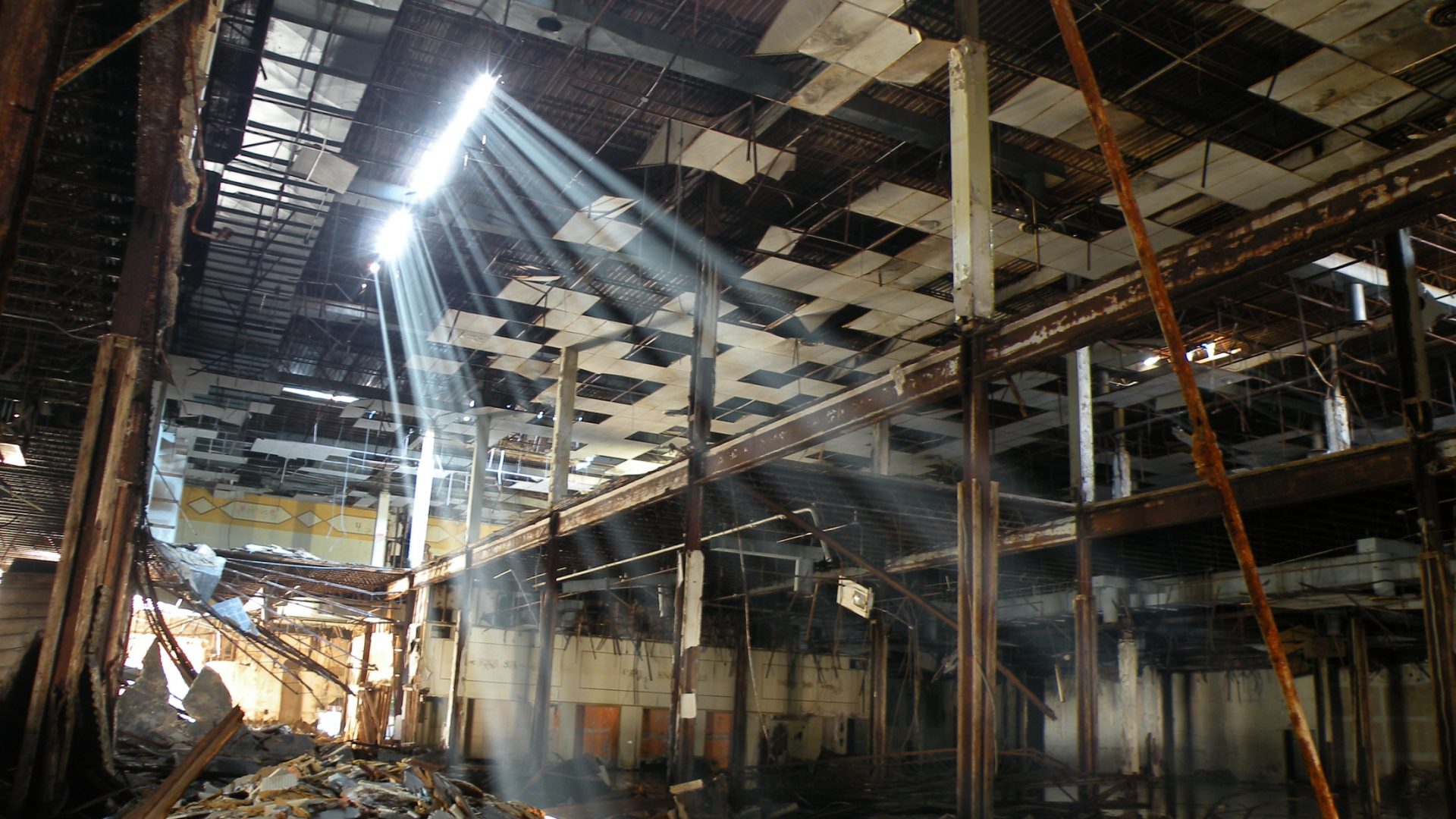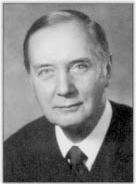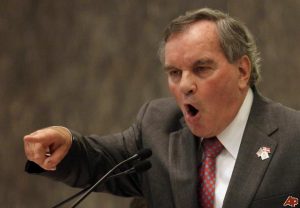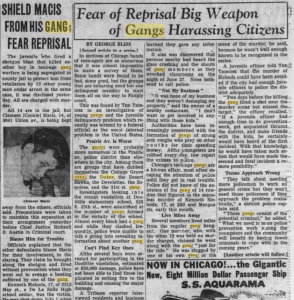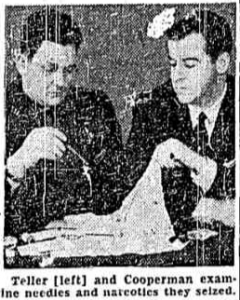| Origins | Settled by Charles Lee in 1804 and annexed in 1863 |
|---|---|
| Area | South Side |
| Boundaries | Chicago River on the north, Pershing Road on the south, Stewart Avenue on the east, Chicago River on the west |
| Gangs founded | Morgan Boys 32nd Street (People), Spanish Cobras, Spanish Chancellors, |
| Gangs headquartered | Morgan Boys 32nd Street (People), Spanish Chancellors, |
The Bridgeport neighborhood was first settled in the year 1804 by Charles Lee when he settled here with his family. Lee had heard about the area after he learned of the construction of Fort Dearborn in 1803 that was about 3 miles away. Lee’s family home was in Fort Dearborn; however, his farming business was right near the river in what would become Bridgeport.
In August of 1812 the British government hired Pottawatomie Native Americans to attack Fort Dearborn and any settlers in the area because the United States was again at war with the British in the War of 1812. Without Fort Dearborn the farm could not thrive, and it closed down as the house that housed employees on the farm also closed down.
In the year 1816 Fort Dearborn was rebuilt and “Mack & Conant” purchased the farmland and built up a fur trading society with log cabins lining the area known as “Hardscrabble.”
In the year 1833 a quarry was opened up that brought employment to immigrants which caused this community of log cabins to expand. In 1835 another town named “Canal Port” was platted in wake of the construction of the Illinois & Michigan canal; however, this town never made it far and was eventually just part of Bridgeport and Pilsen’s boundaries, the only part that remained was a street named Canalport Avenue that is within Pilsen.
When 1836 came around the canal construction began and Canal Port seemed to have a rivalry with the rest of the area; therefore, the name “Bridgeport” may have surfaced right at this time to separate itself from Canal Port.
The first immigrants to migrate in were mainly Irish immigrants that came to work on the canal. In the 1840s German and Norwegian workers came to the area to also work on the canal until it was completed in 1848. Once the canal was complete several manufacturing plants, meat packing houses and lumber yards opened right by the canal which caused a boom in growth of the neighborhood as more Irish arrived in the community but there was also a new wave of German immigrants coming to the area.
In the 1850s or perhaps sooner Bridgeport became one of the more dangerous and seedy areas of the city. Irish immigrants arriving during this time period were very poor and lived in rough buildings. This was about when gang activity first started brewing in this neighborhood.
In the year 1863 Bridgeport became an official Chicago neighborhood. The Germans had settled in larger numbers by the mid-1860s and the Irish objected to this which caused feuds between the two types of residents. In the year 1865 much of the meat packing industry left Bridgeport and moved to the new Union Stock Yards that opened just south of 39th Street (Pershing Avenue) in the bordering community of Lake Township (now called Back of The Yards since 1889). This brought a major influx of more migration to Bridgeport that included more Irish and Germans, Swedish, Czech and Bohemian immigrants. Many of the newly arrived workers were impoverished which brought Bridgeport a slew of lower income classes.
In the early 1880s Italian, Lithuanian and Polish immigrants arrived in Bridgeport making the neighborhood more of a cultural melting pot. With the increase in population and cultures and lower income classes brought the neighborhood early gang activity.
Some of the older gang members of Lake Township grew older and moved to Bridgeport and became active in politics or held other government positions such as being police officers. The gangs that roamed Bridgeport and the Back of The Yards were gangs like: Bearfoots, Hamburgs, Old Rose Athletic Club, Shielders, Dukies and Hickory Street. Between the gangs and the politics in this neighborhood gave rise to some of Chicago’s most corrupt politicians that worked hand and hand with Irish organized crime.
By the year 1933 the strong foothold Bridgeport men had in Chicago politics led to the electing of Edward Joseph Kelly (pictured) as Mayor of Chicago who hailed from Bridgeport. Kelly was Mayor until 1947 then Martin Kennelly (pictured) was Mayor from 1947 to 1955, also from Bridgeport, then came Richard J. Daley (pictured) from 1955-1976, then Michael Bilandic (pictured) from 1977 to 1979. The Bridgeport Mayors’ legacy continued in 1989 when Richard M. Daley (pictured) became Mayor until 2011. These mayors were said to have all dabbled in corruption especially Richard J. Daley that had ties to organized crime.
When World War II came about the Chicago Housing Authority built a white only project complex called the Bridgeport Homes that was between 31st Street to 32nd Street and Halsted Street to Lituanica Street. The projects were there to help families as they worked for industries that served the war effort.
The 1940s and early 1950s were known as the golden age for Bridgeport as the neighborhood was at the peak of prosperity. When the Union Stock Yards began downsizing in the 1950s many Bridgeport residents lost their jobs and moved out of the area, the stock yards played a major role in the economics of this neighborhood and without those jobs the neighborhood began to suffer a little as prominent churches, schools and businesses began closing in the 1960s, some houses also became vacant.
Bridgeport has a long history of racial and cultural clashes that date back to the 1840s when Germans first arrived and a historic clash happened with the Irish in 1856. Polish gangs fought with Lithuanian gangs in the 19th century and Irish gangs fought with Polish and Lithuanian gangs as well.
Bridgeport had gangs for many years due to being next to some of Chicago’s toughest neighborhoods. On the east were the tough streets of Bronzeville, on the west was the rougher neighborhood of Mckinley Park, on the south were the mean streets of Back of The Yards, on the north was the tough streets of Pilsen. Bridgeport saw a need for greaser clubs that would often get violent with each other many of times.
The neighborhood was well known for violent youth gangs before the 1950s but by the 50s the issue became much worse. One murder in front of the Old Dutch store at 3208 Morgan Street on July 1, 1955, shook the whole city when one of the first gang related drive by shootings happened. A gang of greasers drove by the store and saw some other youths they identified as rival gang members then started firing a shot gun which killed 17-year-old Kenneth Sieboda. This murder brought light to all of Chicago that there was a new and more deadly era of street gangs and maybe it was time to give thought that this was a bigger problem than organized crime. The streets of nearby Back of The Yards were experiencing more intense gang wars and these wars were spilling onto the streets of Bridgeport.
In 1957 a major Heroin bust took down several greaser gang members that were running a rather complex drug ring for greaser gangs, this showed how serious the Bridgeport greasers were.
In the year 1958, the Dan Ryan Expressway construction was steered away from Bridgeport because of Mayor Richard J. Daley’s preference. This did not stop the Bridgeport area from being effected by the expressway as Bridgeport experienced the first Hispanic wave in the late 1950s.
In the year 1958, Puerto Rican people were the first non-white groups to move to Bridgeport; however, these impoverished arrivals could only afford to live in the Bridgeport Homes projects at 32nd and Lituanica. These migrants were placed here by Chicago Housing Authority after they were displaced from other neighborhoods. Bridgeport greaser gangs and other groups of angry whites often bullied and attacked these Puerto Ricans until they started Loco De Cullebro which was a group fighting for their rights to live here. In the year 1960, the group would begin taking in Mexicans in the neighborhood and renamed themselves the Spanish Cobras.
In the year 1960, the first Mexican wave came to Bridgeport as they were met with the same hostilities as the Puerto Ricans. Most of the Mexicans settled in the area of 27th and Normal and this is where the Spanish Chancellors gang formed to protect the Mexican people of Bridgeport in 1960. The Chancellors mainly formed because of the Two Six gang that was a group of Italians that often-bullied Mexican youths. This Two Six group is not related to the Two Six group of Little Village.
The 1960s would prove to be an even more violent decade for white greaser gangs in Bridgeport as they fought viciously with each other along Morgan Street and with the Back of The Yards gangs, they would also fight with black gangs near the Dan Ryan Expressway out of the Douglas neighborhood.
The mid 1960s saw the increased migration of Mexican families to Bridgeport. The Latin Kings also migrated into this neighborhood in 1966 and set up their main turf at 27th and Normal right by the Chancellors which started a hostile gang rivalry between Chancellors and Kings. The Latin Kings had a club house at 2702 S. Normal that had “Latin King” spray painted on the door.
The first wave of Latin Kings in Bridgeport did not last long after a conviction of members of the gang stemming from a rape incident at the club house on July 21, 1969 that implicated 8 members of the gang. This is laid out in the court case of the People Vs. Galvan. (People Vs. Galvan, 1976). The Latin King chapter at 27th and Normal was then removed in 1970 after the convictions were handed down.
The projects in Bridgeport were now a mix of impoverished Mexican, Puerto Rican, white and African American families by the 1970s. These families were very poor and the kids living in these projects did not have much to show. The youths soon formed their own gang that they called the “Mighty Projects.” The Mighty Projects wore these certain jackets that were sold at Zayre that were black and white with red bars on them. The biggest rival of the Mighty Projects was the Heads from nearby Gage Park and Mckinley Park. The Mighty Projects were born out of the Bridgeport Homes but they could be seen between 31st to 35th Street between Halsted to Morgan. By 1974, the Spanish Cobras had completely left the neighborhood and moved to East Humboldt Park where they became the Insane Spanish Cobras we know today.
In the year 1978, some members of the Mighty Projects, mainly from around 33rd and Morgan befriended Latin King gang members from Little Village that attended Harrison High School. The Latin Kings that hung out right outside the school were the notorious “Boulevards” Latin Kings from 24th and Marshall. The first two Mighty Projects that joined the Latin Kings were Armando (Bear) and Player, after they joined a large chunk of the MPs turned Latin King and 33rd and Morgan became a major Latin King stronghold and the Bridgeport Latin King headquarters. The rest of the MPs were very bitter over the transition and went to war with this new wave of Latin Kings. The Latin Kings also absorbed a faction of Warlords that held down 33rd and Morgan from 1977 to 1978.
The new Bridgeport Latin Kings made a name for themselves soon after formation by getting into a fight with the Union Federal Boys that hung out in front of the Union Federal Bank at 34th and Halsted. During the fight the Latin Kings shot a member of the Union Federal Boys in the face leaving a gaping hole, after this the Union Federal Boys disbanded.
As the 1980s ushered in, the Folk Nation and People Nation alliances became a big deal on the streets and most gangs were pressured to join a side. The Latin Kings of course were co-creators of the People Nation, so this meant the Mighty Projects favored the Folk Nation. The leader of the MPs was “Birdman” and he adopted Folk Nation concepts for the MPs. I’m not sure if the MPs officially joined Folks or not but they represented it and even flashed the pitchfork. They also changed their name in the 80s to the Project Boys.
The Mighty Projects/Projects Boys were always able to keep up with the Latin Kings and were known to be crazy. In August of 1985, gang members jumped a Latin King riding on a bicycle and as they were beating him up, they discovered he had a .38 revolver, they fired the weapon into the air as they beat the gang member. This became the MPs first gun.
In the year 1985 the Morgan Boys from 32nd and Morgan began that had no ties to the Morgan Boys of 18th Street, in fact, the Morgan Boys of 18th were Folks while these Morgan Boys were People in Bridgeport.
In the year 1987 “Flame” started the 31st and Throop Bishops chapter. The Bishops then moved to take 37th and Wallace and 36th and Sangamon at George Park and Joseph Park.
In the year 1988, the leader of the Mighty Projects Birdman, became a member of the Satan Disciples. After Birdman became an SD the rest of the MPs all became Satan Disciples which brought about the birth of the Bridgeport Satan Disciples and the extinction of the Project Boys. The Satan Disciples then became the dominating gang in the Bridgeport Homes and the immediate area around it.
Sometime either in the later 1980s or the earlier 1990s, African American families began moving into the Bridgeport Homes which brought a wave of Gangster Disciples that happened to be allies with the SDs.
By the 1990s Bridgeport’s Mexican population had reached 35% while Asian migration had reached over 30%. Asian migration to the neighborhood helped stimulate the local economy with Asian owned businesses; however, Bridgeport fell into a state of higher poverty and severe gang activity; however, this neighborhood did not fall as hard as many south side neighborhoods around it. Many myths and jokes have flown around over the years that if you go to a Chicago White Sox game you will get robbed; Bridgeport was never that bad and still is not to the point where you would get jacked just for going to a Sox game, the stories are foolish.
The Saints opened territory at Archer and Lock in the 1990s that would cause an uproar from Satan Disciples and Latin Kings.
In recent years Bridgeport has had a decline in gang activity leaving just the Satan Disciples and Latin Kings as the only active gangs left in Bridgeport. The Bridgeport homes were renovated in recent years and the Gangster Disciples were flushed out while the Satan Disciples have mainly taken those over; however, gang activity is not real rampant in these projects. Bridgeport has also become an area with many newer and even trendier businesses with a growing hipster population. The influx began with the opening of Maria’s Packaged Goods and Community Bar which has been voted to have the best craft beers in Chicago and voted as the best bar in Chicago. Many people from Chicago and the suburbs came in the 2010s decade to sample Maria’s and from there many moved to the neighborhood and opened restaurants and made up a hipster culture. Bridgeport could become the next gentrified community. Bridgeport has some roughness and some crime but is not one of the tougher neighborhoods of Chicago.
Bridgeport is one of the first gangster neighborhoods and is the birthplace of the Insane Spanish Chancellors and the Insane Spanish Cobras.
The most dominating gangs of Bridgeport have been Satan Disciples and Latin Kings.
This a list of the major gangs that walked these streets over time:
Spanish Chancellors Established 1960-2000
27th & Normal
Morgan Boys (32nd) Established 1985-1990
32nd & Morgan Established 1985-1990
Mighty Projects 70s-1988
31st to 35th, Halsted to Morgan 70s-1988
Gaylords 70s, 80s
Archer & Throop 70s, 80s
Bishops Established 1987-2000s
35th to 37th, Sangamon to Wallace (George Park, Joseph Park) Established 1987-2000s
Saints 90s, 2000s
Archer & Lock 90s, 2000s
Latin Kings Established 1966-1969, re-established 1978-present years
28th & Normal Established 1966-1969
Archer to 29th, Throop to Poplar
33rd to 36th, Morgan to Halsted (Morgan Latin Kings) Established 1978-present years
Satan Disciples Established 1988-present years
31st 32nd, Aberdeen to Halsted Established 1988
31st to 31st Place, Halsted to Morgan (Bridgeport projects) Established 1988-present years
29th & Wallace
Spanish Cobras Established 1958-1974
31st to 31st Place, Halsted to Morgan (Bridgeport projects) Established 1958-1974
32nd & Morgan Established 1960-1974
Warlords Established 1977-1978
33rd & Morgan Established 1977-1978
Union Federal Boys
34th & Halsted
Two Six (Bridgeport gang, not GTSN gang) 1950s-1970s
26th from Wallace to Normal 50s, 60s, 70s
